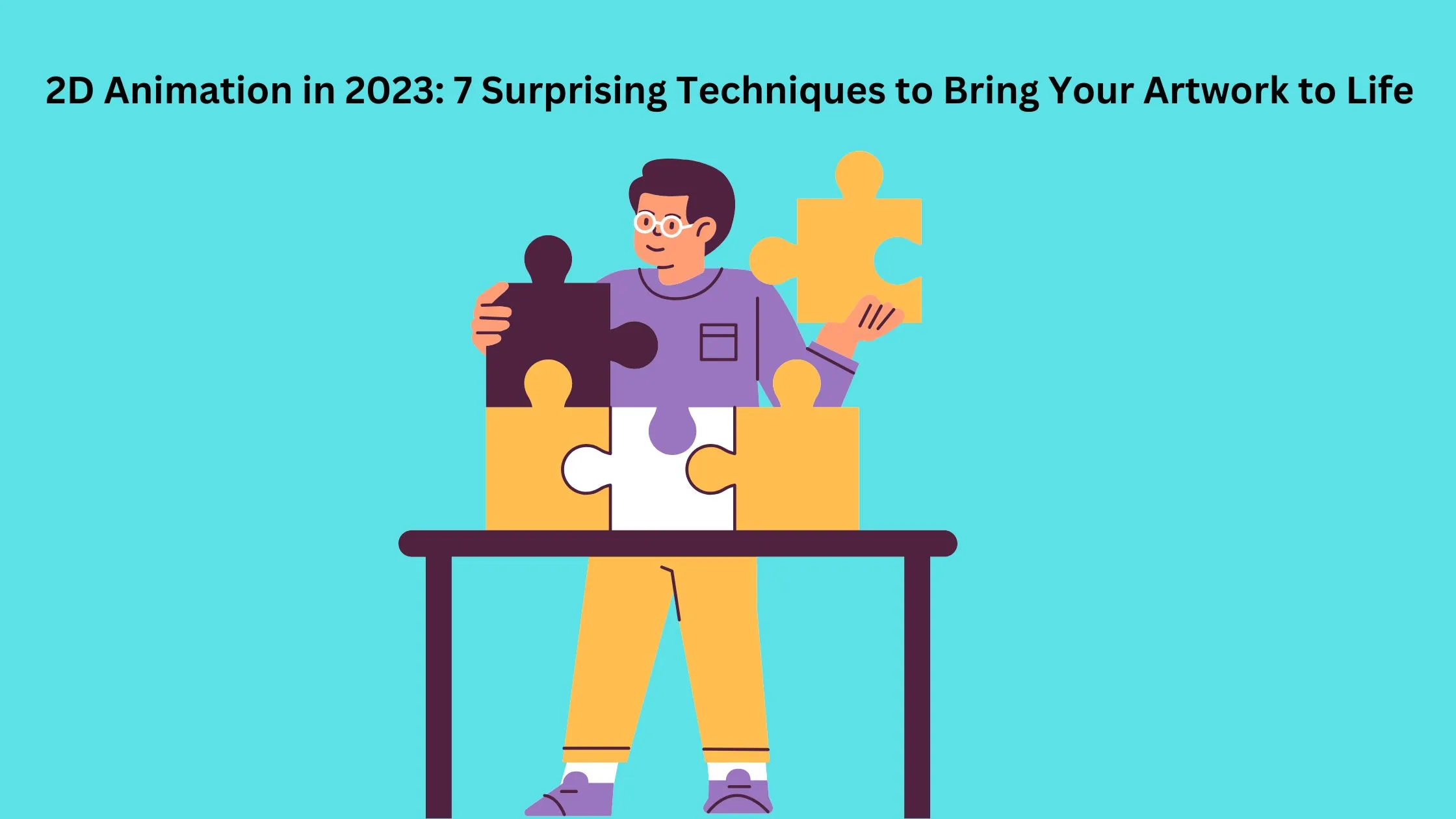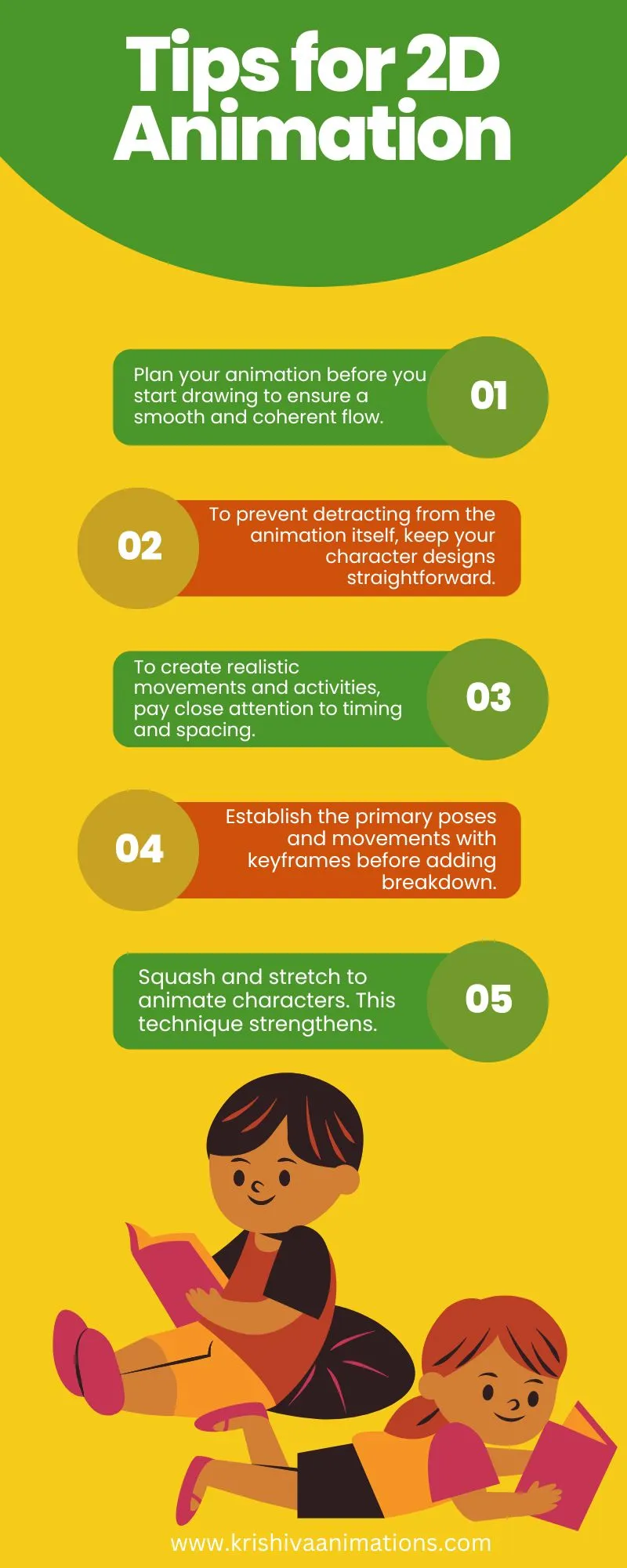
2D Animation in 2023: 7 Surprising Techniques to Bring Your Artwork to Life
2D Animation in 2023: 7 Surprising Techniques to Bring Your Artwork to Life
A type of animation known as “2D animation” involves the creation of visuals in a two-dimensional environment. Television programmes, motion pictures, video games, and advertisements frequently employ this style of animation. Traditional hand-drawn methods or computer software can be used to create 2D animation. Adobe Animate, Toon Boom, and Anime Studio are a few examples of popular 2D animation tools. With the rise of online content creation, 2D animation has grown more popular than ever before. With visually appealing and amusing material, it offers a distinctive and imaginative method to communicate tales and engage people.
Although 2D animation has been around for a while, the possibilities for producing gorgeous and dynamic 2D animations have never been better thanks to the ongoing advancement of technology and the emergence of new tools in the animation sector. In this article, we’ll look at 7 unexpected methods that can help you improve your 2D animation abilities in 2023. These suggestions will give you invaluable insights into the newest trends and technologies in the world of 2D animation, whether you’re a novice or an expert animator.
Here are the 7 surprising techniques to bring your 2D artwork to life in 2023 :
- Usage of Procedural Animation: Using algorithms rather than hand keyframing, procedural animation is a technique that enables animators to produce intricate and lifelike movements. This enables more complex actions to be made with less time and effort.
- Animation professionals can design dynamic backdrops that move and alter as the characters travel through the scene in place of static backgrounds. The animation may gain depth and appeal as a result.
- Animators can present stories in a more participatory and immersive way by using non-linear storytelling, which departs from the conventions of linear storytelling. This method can make the audience’s experience more interesting.
- Usage of 3D Assets: Using 3D elements in 2D animations can give the work more depth and reality. Moreover, it provides additional latitude for camera movement and illumination.
- The importance of sound design should be highlighted since, despite being frequently disregarded, sound design may significantly affect the quality of an animation. Voiceovers, music, and sound effects can be used to improve the mood and ambiance of a scene.
- A unique and visually attractive animation can be produced by combining several sources, such as live-action video, stop-motion animation, or hand-drawn animation.
- Cooperation with Other Artists: Working together with other artists and experts can help the animation by bringing in new ideas and viewpoints, making the end output more dynamic and well-rounded.
Frequently Assked Question
2D animations can be made using a variety of programmes, such as Adobe Animate, Toon Boom, Anime Studio, and others. The programme you choose will rely on your needs, skill level, and financial constraints.
Indeed, you can. You can find several online tutorials and courses that will teach you the fundamentals of 2D animation. Everyone can learn to produce 2D animations with time and effort.
Conventional hand-drawn animation requires drawing every frame by hand on paper, while digital animation involves making the animation on a computer using software. Although digital animation allows greater flexibility and control over the finished result than traditional animation, both methods have pros and downsides.
The complexity of the animation and the animator’s level of expertise both affect how long it takes to produce a 2D animation. Simple animations can be made in a few hours, while more complicated ones might take weeks or even months to complete.
You can, indeed. A 2D animation can gain depth and realism by using 3D objects. You can import 3D models into many different software packages and incorporate them into your 2D animations.
Conclusion
In conclusion, new tools and approaches are continually being developed in the area of 2D animation. By remaining up to speed with the newest trends and adding these 7 surprise approaches into your animation workflow, you can produce attractive and original 2D animations that fascinate and engage audiences.
These methods offer fresh approaches to push the limits of 2D animation and bring your artwork to life in interesting and surprising ways. They include the use of procedural animation, dynamic backgrounds, non-linear narrative, 3D elements, sound design, mixed media, and cooperation with other artists.
2D animation is becoming more and more common as the demand for online content increases. Animations that stand out from the competition and make an impact on viewers can be made by animators with the appropriate talents and methods.
Use these 7 unexpected ways, whether you’re a novice or a seasoned animator, to bring your 2D artwork to life in 2023 and beyond. With practise, effort, and imagination, you may produce animations that inspire, entertain, and delight audiences for years to come.

